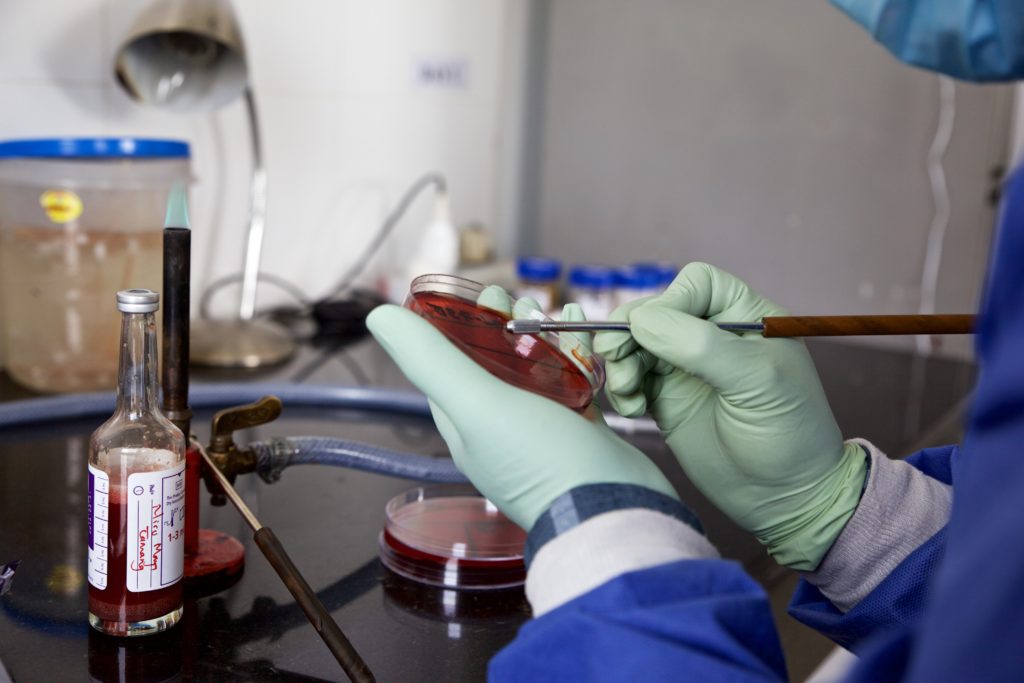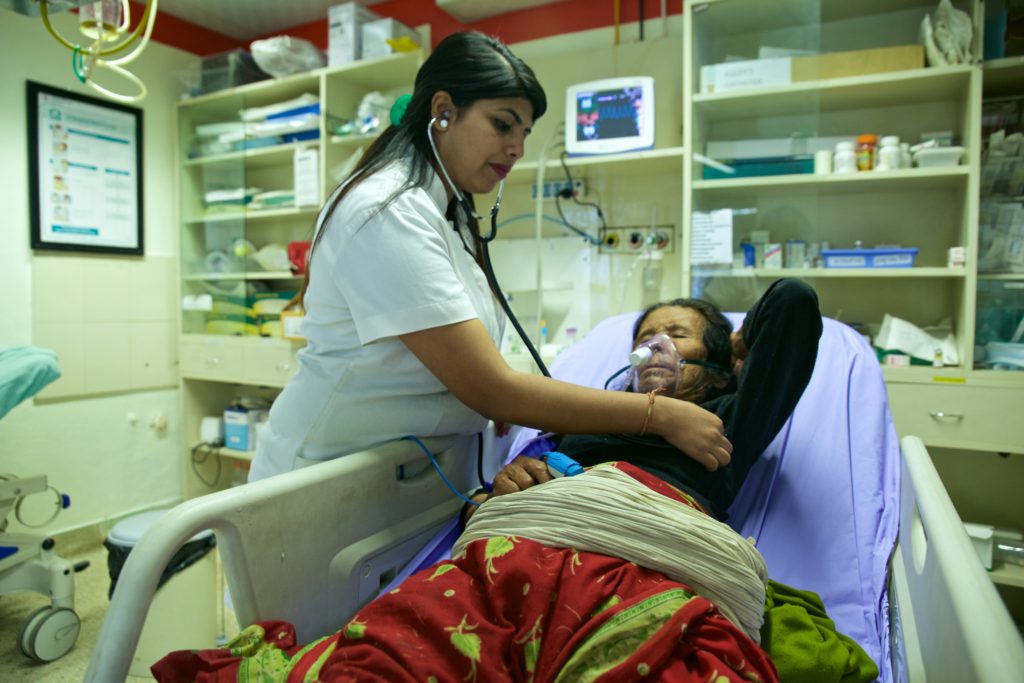Diagnostics
Typhoid  diagnosis is confirmed through blood culture. Accurate diagnosis of the disease faces multiple challenges:
diagnosis is confirmed through blood culture. Accurate diagnosis of the disease faces multiple challenges:
- Blood cultures require laboratory support and are therefore rarely performed in countries that have limited health resources.
- Blood cultures for typhoid only correctly identify 40 to 60 percent of typhoid cases
- Typhoid shares common symptoms including high fever, flu-like symptoms, abdominal pain, and constipation or diarrhea, with other febrile illnesses such as malaria, dengue fever, and pneumonia. This often leads to misdiagnosis.
These diagnosis challenges lead to a delay in treatment and strongly contribute to the typhoid case fatality rate. Current typhoid case fatality rate estimates range from 10 – 20 percent depending on timeliness of treatment and complications suffered. This highlights the need for expanded access to care and improved diagnostics to differentiate typhoid infections from other confounding illnesses.
Treatment
Treatment for typhoid can save lives. If left untreated, the disease can cause severe and deadly complications, including gastrointestinal bleeding and intestinal perforation. Treatment of typhoid fever depends on the severity of the case, the availability of follow-up care, and the typhoid strain’s responsiveness to available antibiotics. While treatment duration differs case-by-case, at least 10–14 days of antibiotic therapy is recommended for severe cases.
for typhoid can save lives. If left untreated, the disease can cause severe and deadly complications, including gastrointestinal bleeding and intestinal perforation. Treatment of typhoid fever depends on the severity of the case, the availability of follow-up care, and the typhoid strain’s responsiveness to available antibiotics. While treatment duration differs case-by-case, at least 10–14 days of antibiotic therapy is recommended for severe cases.
Quinolones, antibiotics including chloramphenicol, amoxacillin and trimethoprim-sulfamethoxazole, are often the first line of treatment for typhoid. However, research indicates that multidrug resistant typhoid strains have become increasingly common in high-burden communities, requiring new and more expensive antibiotics for treatment and increasing hospitalization rates for patients. Consequently, physicians must rely on more expensive, second-line drugs, including azithromycin, cephalosporin or ciprofloxacin. The increasing difficulty of treatment highlights the need for preventative measures, such as vaccines and improved water and sanitation infrastructure.
Photos by Mithila Jariwala.


